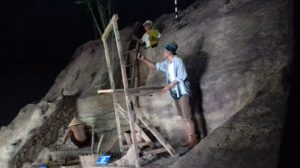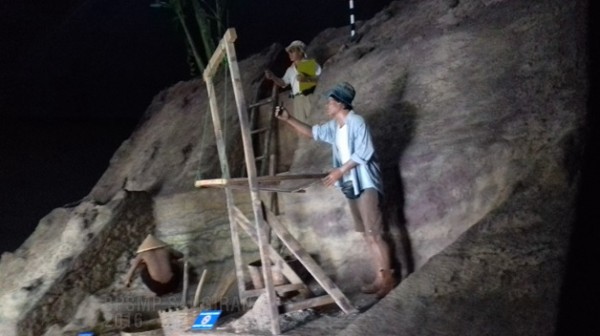Every visitor of Cluster Ngebung Museum will be welcomed by a room full of diorama picturing excavation activities. Most of them might ask about information in the diorama. This article will help them to understand what information contained in the diorama.
The main theme behind Cluster Ngebung Museum is “History of the discovery of Sangiran”. One of the major figures that their action will never be forgotten is van Koenigswald. He was the first man who found a bunch of stone flakes and lath made from jasper in Ngebung hill. This finding then was known with “Sangiran flake industry”. Koenigswald stated that the “Sangiran flake industry” was from Middle Pleistocene or around 400.000 years ago as it had association with Trinil fauna, although it was only an early finding.
Van Koenigswald statement was criticized by other researchers such as: Helmut de Terra, Hallam L. Movius, dan Tielhard de Chardin. They argued that the tools from “Sangiran flake industry” was formed from Notopuro sedimentation which younger than van Koenigswald had stated since Sangiran’s early man did not have such ability to make those flakes. Another researcher, G.J Bastra, stated that tools of “Sangiran flake industry” at Ngebung were sediment from the process of Sangiran dome’s folding, in the other words “Sangiran flake industry” according to G.J Bastra were 50.000 years old.
There was not yet exact number on how old the flakes of Ngebung. It emerged polemics among scientists and as the solution an excavation was done directly at the finding site to see its stratigraphy.
In 1990, Pusat Penelitian Arkeologi Nasional (National Archeology Research Center) together with d’Histoire Naturelle National Museum (France) excavated the Ngebung hill, the place where “Sangiran flakes industry” tools were found. In that research, the answer about how old the “Sangiran flake industry” were found. During the excavation process, astonishing and very important data such as: human residue, fauna residue, stone artefacts and stone flakes like what van Koenigswald had found at fluvial-volcanic sand sedimentation, member of lower dome formation, was found.
Those data proved that “Sangiran flake industry” in Ngebung was cultural product from Sangiran’s Homo erectus that lived around 700.000 years ago or in Middle Pleistocene Era. (wahyu widianto)
-translated by: Arif Budianto-






